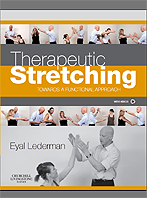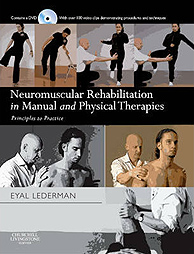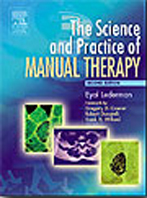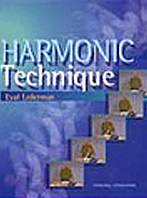TOWARDS A FUNCTIONAL APPROACH
Book & online video
By: Dr. Eyal Lederman
Publisher: Churchill Livingstone
Accompanied by a range of practical on-line videos and over 150 photographs, this volume will be ideal for all manual and physical therapists, sports and personal trainers, and athletes who require special movement ranges. more …
IN MANUAL AND PHYSICAL THERAPY
Book & DVD
By: Dr. Eyal Lederman
Publisher: Churchill Livingstone
The book is a synthesis of over half a century of research and can be described as ‘neuromuscular rehabilitation made easy’. It explores movement control and how it is affected by injury, pain and central damage. It provides practical solutions and comprehensive demonstrations (DVD) of movement rehabilitation for the upper and lower limbs and the trunk/spine.
more …
TOWARDS A FUNCTIONAL APPROACH
Book & online video
By: Dr. Eyal Lederman
Publisher: Churchill Livingstone
FOREWORD EXCERPTS
“Clear writing, excellent organization and the effective use of line drawings, flow charts, boxes, tables and graphs have allowed Professor Lederman to succeed in producing an outstanding text covering the basic science and clinical application of all forms of manual therapy.
Professor Lederman’s text is a masterful and fascinating presentation of the science of manual therapies.”
Prof. Gregory D. Cramer, Chiropractician, 2004
“This book will be especially useful for students in the osteopathic schools. Beyond providing insight into the ‘mechanisms of action’ for manual techniques, Professor Lederman’s text is written in such a way that it will facilitate the formulation of research problems that can be organized into reasonable experimental studies. It is my pleasure to recommend this text as a starting point for gaining an understanding of manual therapy for all students of body function and dysfunction.
Prof. Frank H. Willard, Osteopath, 2004
“The second edition of Professor Lederman’s The Science and Practice of Manual Therapy arrives at a time when evidence-based practice is evolving as the state of the art in clinical practice. Practical application combined with scientific research an . understanding of anatomy and histology is the strong point of any treatment approach. The foundation of this book is built upon the above principles. At a time when pressures to increase productivity are prevalent, it is important to select techniques that have reliability and have proven to be successful in patient care.
Professor Lederman has provided us with a wealth of information designed to enhance our clinical decision making and technical skills.”
Prof. Robert Donatell, Physiotherapist, 2004 more …
Book & VHS Video or DVD
By: E. Lederman
Publisher: Churchill Livingstone
REVIEWS
“Overall, this package is effective: it provides clear description and explanation, enabling consumers to obtain a good feel for the technique. Case histories in the book are useful in applying the technique to clinical situation, bringing it to life.”
Liz Horley, Physiotherapy, June 2000
“I enjoyed reviewing this set and would recommend it as a useful and informative book relevant to the work of all manual therapists, although a little expensive for osteopathic undergraduates. I found it thought provoking and can imagine myself dipping into it on a fairly regular basis in practice.”
Fiona Walsh, The Osteopath, February 2000 more …
CPD Courses with Dr. Eyal Lederman
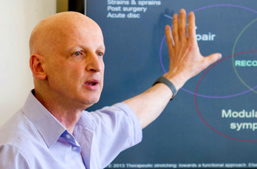 HARMONIC TECHNIQUE
HARMONIC TECHNIQUEHarmonic Technique is a passive form of oscillatory, rhythmic techniques that can be applied to different joints and tissues.
Research over the last four decade has demonstrated that passive movement, such as used during Harmonic technique, has an important role in facilitating tissue repair and adaptation after injury. Intermittent external compression has been demonstrated to improve tissue healing as well as increasing fluid flow and reducing oedema. Passive motion has been recently shown to facilitate recovery from rotator cuff surgery and help resolve pain in frozen shoulder. These studies suggest that passive motion can be a useful clinical tool in the treatment of different musculoskeletal conditions. more …
FUNCTIONAL STRETCHING
Clinical stretching has limited contribution to recovery of movement range in many musculoskeletal conditions – Immediate: 3°, short-term: 1°, long-term: 0° (Cochrane Database, CD007455)
Traditional stretching methods were shown to have a limited influence in improving range of movement (ROM) in conditions where there are pathological tissue shortening. These modest outcomes were observed for all forms of stretching approaches.
Functional stretching has been developed over 10 years by Prof Lederman to provide a solution to the limitations of traditional stretching approaches. It focuses on active restoration of ROM, using task-specific, functional movement patterns. This approach is informed by research in the areas of tissue adaptation, motor control, pain and cognitive-behavioural sciences.
Functional stretching can be used to recover ROM losses in various musculoskeletal conditions including post-injury rehabilitation, immobilisation, surgery, frozen shoulder and central nervous system damage. Part of the course will also examine the potential use of functional stretching in pain alleviation and ROM desensitisation. more …
MANAGING SHOULDER CONDITIONS USING A PROCESS APPROACH
A practical workshop exploring the theory and management of common shoulder conditions seen in clinic.
In particular, the workshop will focus on frozen shoulder, impingement syndrome and post-operative management of the shoulder.
There will be discussion of the aetiology and the pathophysiological mechanisms associated with these conditions and a review of current research findings. Many of the shoulder conditions seen in clinic are associated with complex processes that are not related to postural, structural or biomechanical factors.
For this reason a process approach will be used as a model for management. In this approach the focus of management is on the three recovery processes associated with improvement from musculoskeletal conditions – repair, adaptation and modulation of symptoms. The management aims to co-create with the patient environments that will support these self recovery processes.
In the workshop participants will learn how to develop specific treatment strategies and how to match the most suitable manual techniques and exercise to the patient’s condition.
The practical session will include a demonstration and practice of specific manual techniques and self-care management and exercise. more …

